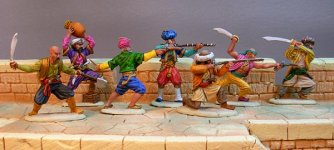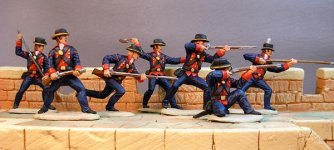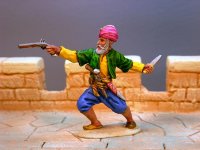kilted vampire
Lieutenant Colonel
- Joined
- Mar 2, 2006
- Messages
- 7,900
Here is a good one. I use acryllic flat paint mostly. As I do my work I handle the figures and the paint being soft quite naturally comes off. What to do , you might ask? Well you might ask. I cover the paint in a glossy varnish which is harder than the flat acryllics. The varnish is water based. I get it from a local art and crafts supply store. Really inexpensive too I might add.
I cover the paint in a glossy varnish which is harder than the flat acryllics. The varnish is water based. I get it from a local art and crafts supply store. Really inexpensive too I might add.
Another thing the gloss acts as a skin which protects the paint and keeps the whole paint job together. I have not been priming the metal and this seems to work.
Another thing the gloss acts as a skin which protects the paint and keeps the whole paint job together. I have not been priming the metal and this seems to work.




